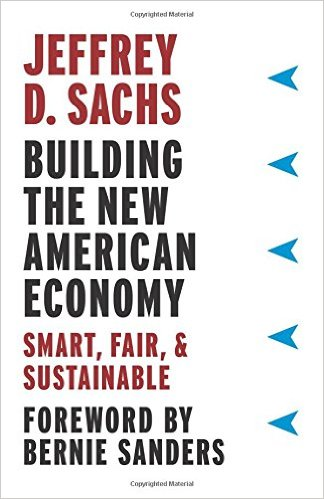Yesterday’s numbers on economic activity in the retail and industrial sectors is a tale of two trends through January. Consumer spending accelerated to the fastest annual pace in five years while industrial production was flat vs. the year-earlier level. Given the greater influence of consumption for the US economy, the retail data will probably have more sway at the Federal Reserve, which remains on track to continue raising interest rates this year. Another factor that suggests the central bank will continue to tighten policy: consumer inflation at the headline level in January increased to the highest year-over-year rate since 2012.
Continue reading
Monthly Archives: February 2017
Mr. Market Bets Big On Trumponomics
Bubble risk may be lurking for the US stock market, but the analysis could be wrong if economic growth accelerates in a meaningful degree due to the Trump administration’s planned policy changes. At this point, the case for anticipating a stronger economy is open for debate, but Mr. Market has already cast his ballot.
Continue reading
Is Bubble Risk Elevated For US Stocks?
The US stock market reached a new record high yesterday (Feb. 13) via several benchmarks, including the S&P 500. Analysts say that the crowd is enthused by bullish expectations for the Trump administration’s economic plan in general, and a tax overhaul in particular for the immediate future.
Continue reading
Commodities Rallied Last Week, Leading Most Markets Higher
Broadly defined commodities topped the winner’s list last week, rising to the highest level since last summer, based on a set of based on a set of exchange-traded products representing the major asset classes. Emerging-market equities were close behind, rising for the third straight week during the five trading days through Feb. 10. Meantime, last week’s losers were limited to foreign bonds (in US dollar terms).
Continue reading
Book Bits | 11 February 2017
 ● Building the New American Economy: Smart, Fair, and Sustainable
● Building the New American Economy: Smart, Fair, and Sustainable
By Jeffrey D. Sachs
Summary via publisher (Columbia University Press)
In this passionate and powerful book—part manifesto, part plan of action—the renowned economist Jeffrey D. Sachs offers a practical strategy to move America, seemingly more divided than ever, toward a new consensus: sustainable development. Sustainable development is a holistic approach that emphasizes economic, social, and environmental objectives in shaping policy. In focusing too much on economic growth, the United States has neglected rising economic inequality and dire environmental threats. Now, even growth is imperiled.
Continue reading
Research Review | 10 February 2017 | Portfolio Strategy
Liquid Alternative Mutual Funds versus Hedge Funds
Jonathan S. Hartley (University of Pennsylvania)
February 1, 2017
Despite the rapid rise of the number of liquid alternative mutual funds (LAMFs) available to retail investors in recent years, few studies have compared how their return and risk characteristics differ from their hedge fund counterparts across their entire history. Being among the first comprehensive studies to look at over two decades of LAMF performance, we use risk based factors to compare the performance of LAMFs to hedge funds both in aggregate and broken down by investment styles including equity long-short, market neutral, multi-strategy and managed futures. Overall, we find that LAMFs underperform hedge funds on average by 1-2% per year on a net-of-fee basis when controlling for standard risk factors. These findings provide important implications for investors seeking hedge fund-like returns while considering the importance of liquidity, transparency, and fees as well as for policymakers who have recently proposed imposing derivative position limits on 1940 Act investment vehicles.
Continue reading
How Much Political Risk Can The Markets Tolerate?
Bull markets have been known to climb a wall of worry. But when does a rising supply of unease become too much to handle?
Continue reading
Stronger Growth Expected For US In Q1
First-quarter GDP growth for the US is expected to pick up after a sluggish Q4, according to forecasts from several sources. It’s still early in the quarter, but the preliminary estimates for the kickoff to 2017 anticipate a firmer trend.
Continue reading
Tail-Risk Analysis In R: Part II — Extreme Value Theory
The financial crisis of 2008 devastated portfolios far and wide and brought the global economy to the brink of collapse. It was a disaster, but there was at least one positive outcome from the debacle: a wider recognition that tail risk is a real and present danger that’s forever lurking. The challenge is deciding how to model and manage the risk. You won’t find any easy solutions, but there are practical tools for estimating a portfolio’s vulnerability.
Continue reading
Most Markets Continued To Rally Last Week
Prices continued to rise last week in most markets around the world, based on a set of ETFs representing the major asset classes. Leading the winners during the five trading days through Feb. 3: emerging-market bonds. The only losers last week: inflation-indexed US Treasuries and broadly defined commodities.
Continue reading